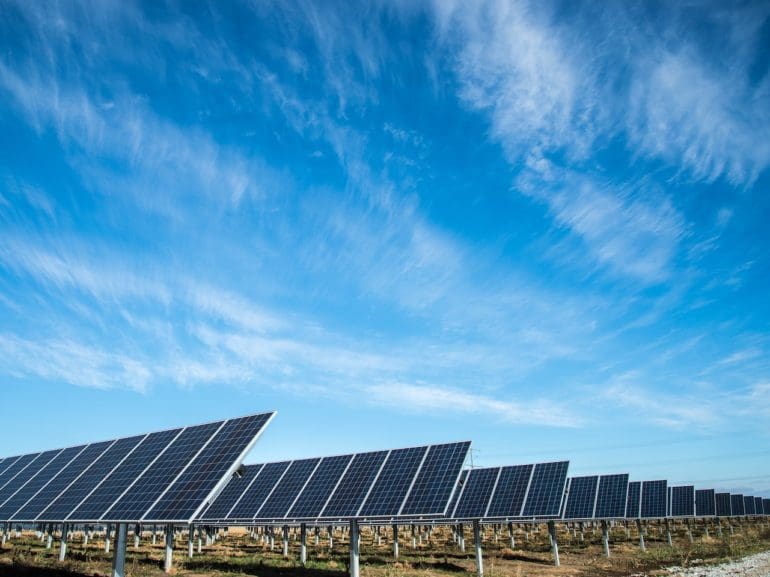Despite extensive pushback from some governmental figures, sustainable and renewable energy sources are becoming a more prominent area of focus in the U.S.
The focus on domestic energy production to curb inflation led to the passing of the Inflation Reduction Act last year. With it came a wave of consumer demand for solar loans, an area already showing 59% growth year over year.
In addition, private groups positioned to aid climate objectives are growing. Fintechs have developed to support this shift.
Greenpenny is a digital bank that aims to “finance a sustainable tomorrow.” Unlike many legacy banks, their remit is to use deposits to finance clean energy and carbon-reducing projects.

“We’re trying to help finance the renewable energy transition in our five states, Iowa, Minnesota, Wisconsin, Illinois, and Missouri,” said Jason MacDuff, president of greenpenny.
The bank is a subsidiary of Decorah Bank and Trust, based in Decorah, Iowa, one of the areas with the highest adoption rates of renewable energy in the U.S.
“A lot of that happened because Decorah Bank and Trust financed that,” he continued. “As the bank was looking for ways to grow, we decided to lean in on what we’re good at. And that is how to finance renewable energy adoption and communities.”
Financing makes the transition possible
Inflation has caused household energy costs to skyrocket, and consumers are researching their options.
“Rising energy prices have awakened people to the opportunities of researching alternatives, like solar,” continued MacDuff. “They look at their natural gas bills during the winter when they’re probably double or triple what they were even a few years ago. That makes a lot of folks up to trying to see if they can have better control over their energy costs.”
He explained that the passing of the Inflation Reduction Act had supported this, and as a result, there had been a surge in interest.
“The average solar system costs around $40,000. For our borrowers, that’s a significant investment, so much of that will have to be financed.”
“Just as in the Industrial Revolution, a lot of that commercial banks helped finance, a lot of that. So too, will the renewable energy transition.”
“It has to be stimulated by governments. But governments can’t do it all themselves. Private industry and private capital, including by banks, is necessary to help this renewable energy transition happen.”
Partnering with JackHenry
Greenpenny made headlines in announcing their partnership with Jack Henry in late January 2023.

“The partnership with Jack Henry is going to do a lot of things for us,” said Sarah Thomas, COO of Decorah Bank, the parent to greenpenny. “It increases automation. And so that creates a lot of efficiencies. While they may not be things that the customer directly interacts with, there are many things on the back end for our bankers that enable them to spend more time with the borrower.”
Stacey Zengel, Senior Vice President of Jack Henry and president of Bank Solutions, explained that the efficiencies that Jack Henry provided could allow greenpenny to scale, extending their reach for renewable energy financing options.
“We are proud to help them continue to make an impact in green energy banking and are excited to see what more they will achieve,” he said.
A rocky transition
While the renewable energy goal is noble, many are concerned about the transition of nations’ energy supply and the prospect of a deficit.
Globally, governments and companies have announced steps that seem somewhat counterintuitive, citing a need to increase investment in fossil fuel projects for various reasons. After announcing record profits from 2022, BP has quietly slowed its oil and gas retreat, citing a need for a “secure” energy source.
MacDuff explained that focusing on renewable energy is paramount, but he remained realistic about the rocky road ahead.
“Even with all the investment and all the attention that’s happening with this renewable energy transition, there are still real question marks as to how we’re going to get it done.”
“The Inflation Reduction Act has the largest stimulus for climate investments in the history of our country. It’s wonderful. But it has aggressive goals. For example, in the solar space, the goal is for the country to be 30% solar powered by 2030.”
“To accomplish that, we need hundreds of thousands of workers to transition into the industry to help support that kind of massive transition. There’s a lot of discussion about labor shortages in the renewable energy sector.”
“You obviously can’t transition with something that’s this massive overnight.”
RELATED: Cutting through greenwashed ESGs with conscious investing


